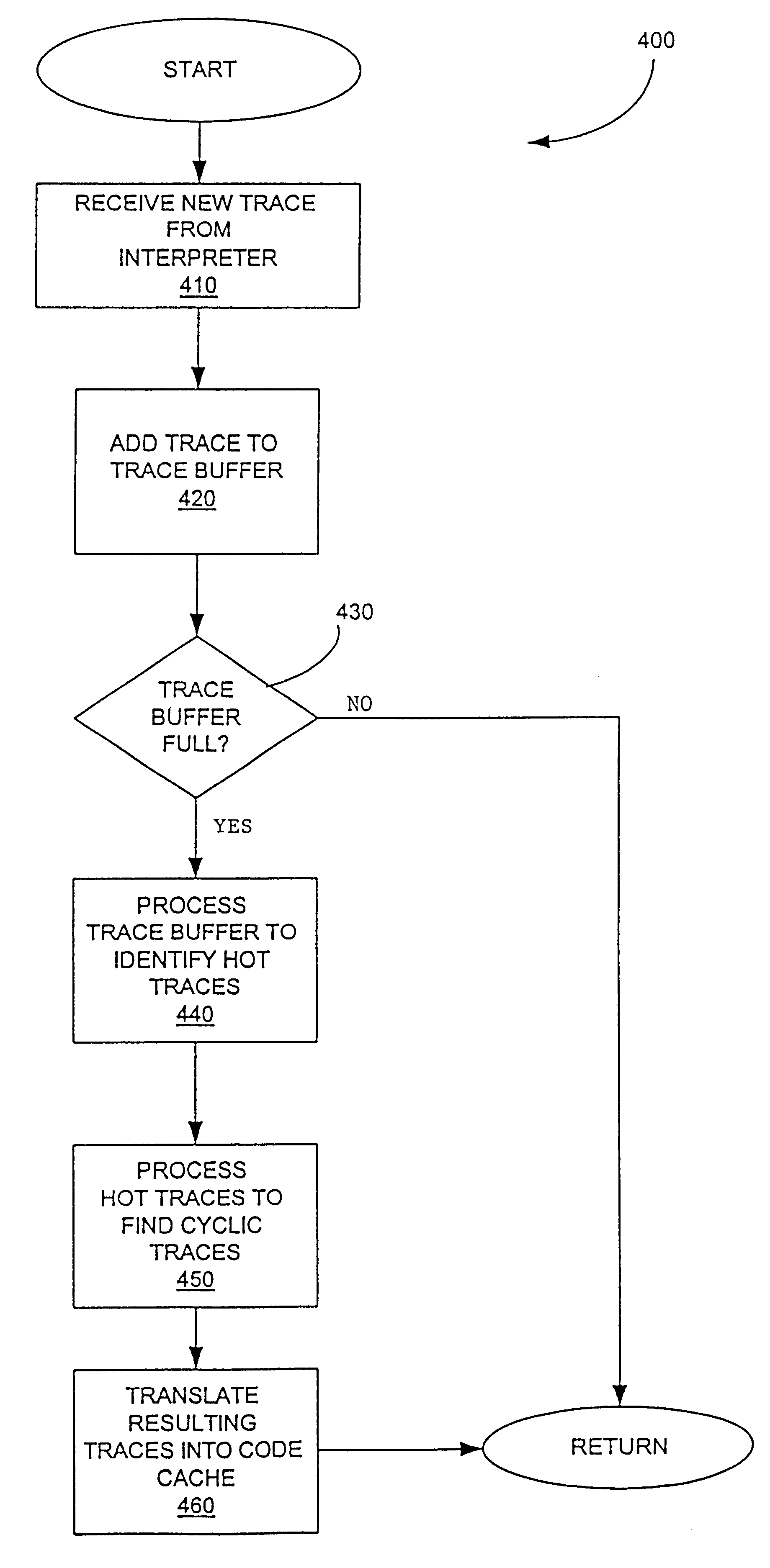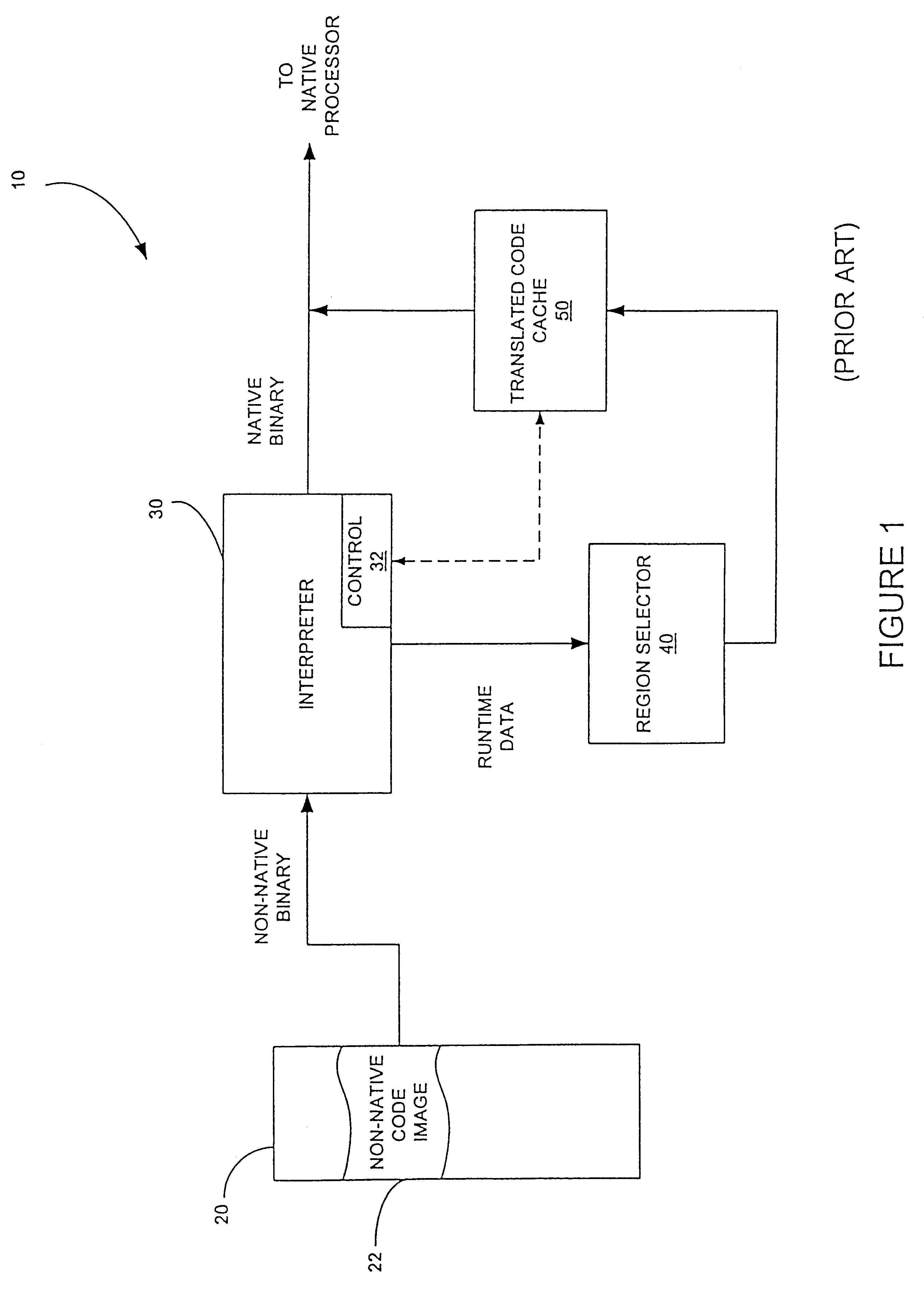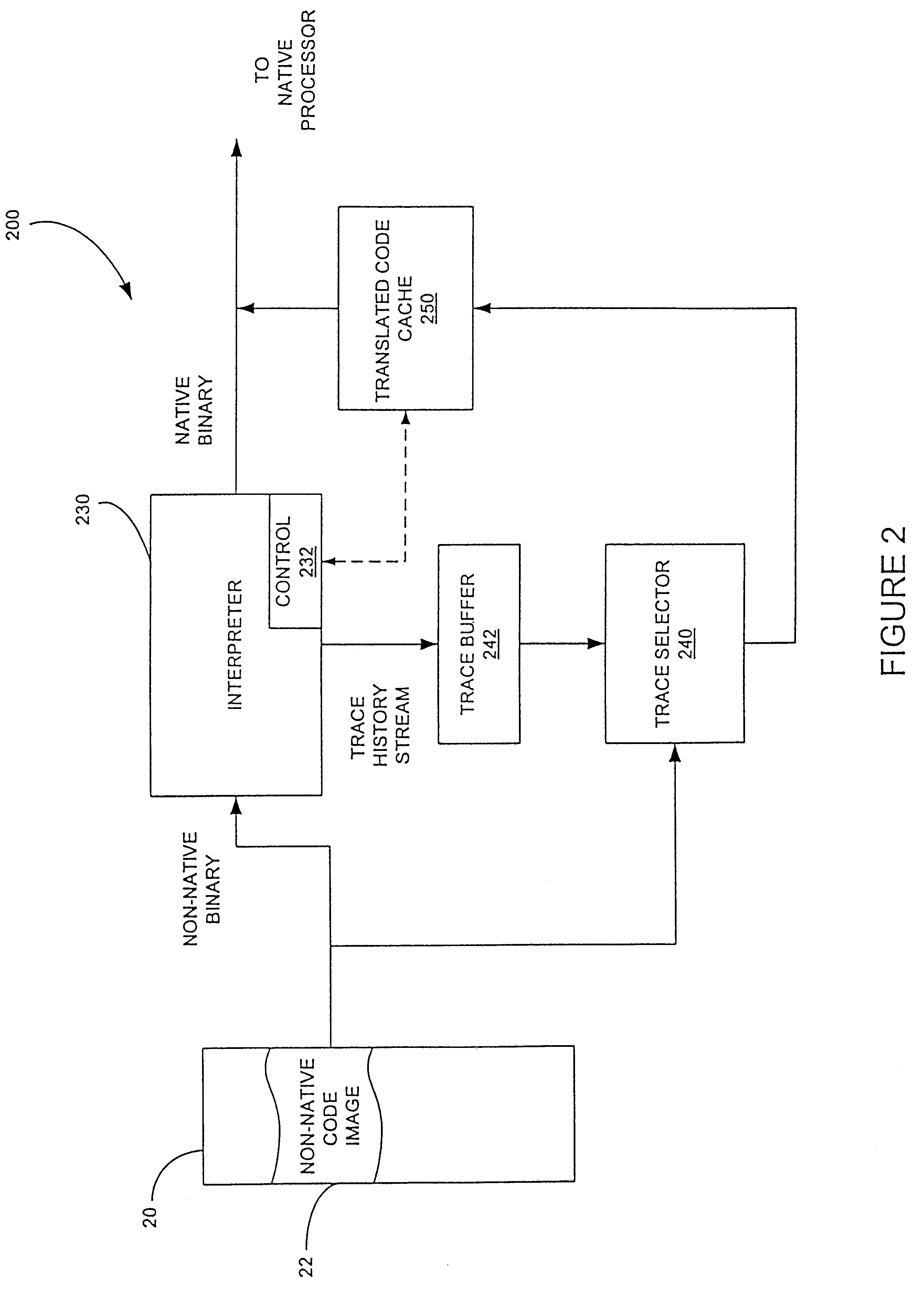Method for selecting active code traces for translation in a caching dynamic translator
a dynamic translator and code tracing technology, applied in the direction of program control, computation using denominational number representation, instruments, etc., can solve the problem of difficult trigger action, high overhead, and significant level of overhead in translating non-native to native cod
- Summary
- Abstract
- Description
- Claims
- Application Information
AI Technical Summary
Problems solved by technology
Method used
Image
Examples
Embodiment Construction
The present invention is directed towards a method for selecting active traces in an executing program for translation into a translated code cache. The strategy in the trace selection method of the present invention is to identify hot traces for translation into the translated code cache, where the traces are preferably cyclic. A "trace" is defined to be a sequence of dynamic instructions terminated by the execution of a "trace-ending" branch. The method also searches for sequences of traces which can be combined to form larger cyclic traces.
A trace-ending branch is one that satisfies any one of the following conditions: (1) it is a backward taken branch, i.e. the target address of the branch is earlier in the execution cycle than its own address; (2) it is an indirect branch where the branch target can only be determined by executing that instance of the branch, i.e. the target cannot be determined by decoding the branch instruction itself; and (3) execution of the branch causes t...
PUM
 Login to View More
Login to View More Abstract
Description
Claims
Application Information
 Login to View More
Login to View More - R&D
- Intellectual Property
- Life Sciences
- Materials
- Tech Scout
- Unparalleled Data Quality
- Higher Quality Content
- 60% Fewer Hallucinations
Browse by: Latest US Patents, China's latest patents, Technical Efficacy Thesaurus, Application Domain, Technology Topic, Popular Technical Reports.
© 2025 PatSnap. All rights reserved.Legal|Privacy policy|Modern Slavery Act Transparency Statement|Sitemap|About US| Contact US: help@patsnap.com



